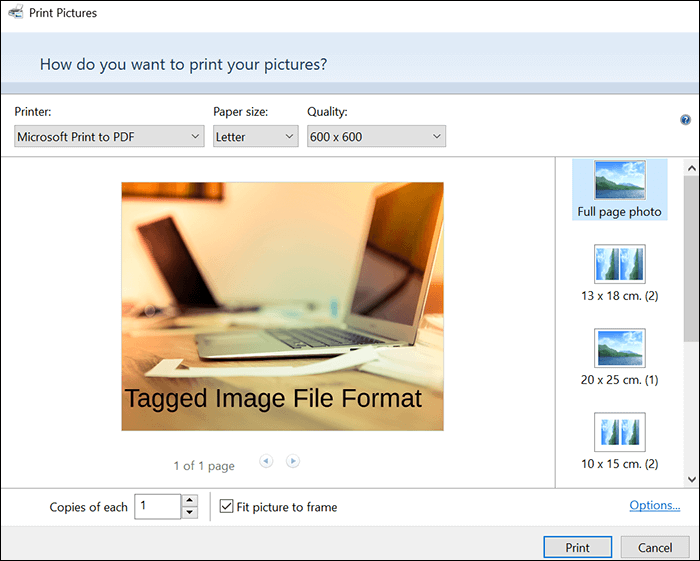

A baseline TIFF image divides the vertical range of the image into one or several strips, which are encoded (in particular: compressed) separately. Horizontal and vertical resolution need not be equal (since in a telefax they typically would not be equal). The two axes of this geometry are termed horizontal (or X, or width) and vertical (or Y, or length). TIFF images are made up of rectangular grids of pixels. Some tags are for linking to the actual image data, other tags specify how the image data should be interpreted, and still other tags are used for image metadata. There may within a single IFD be no more than one entry with any particular tag. Each IFD entry has an associated value, which may be decoded based on general rules of the format, but it depends on the tag what that value then means. The tags are arbitrary 16-bit numbers their symbolic names such as ImageWidth often used in discussions of TIFF data do not appear explicitly in the file itself. Each IFD contains one or several entries, each of which is identified by its tag. The IFDs are where the tags for which TIFF is named are located. Baseline TIFF readers are only required to make use of the first subfile, but each IFD has a field for linking to a next IFD. Rather than being a continuous range of bytes in the file, each subfile is a data structure whose top-level entity is called an image file directory (IFD). The basic use-case for having multiple subfiles is to encode a multipage telefax in a single file, but it is also allowed to have different subfiles be different variants of the same image, for example scanned at different resolutions. Additional extensions are defined in two supplements to the specification, published September 1995 and March 2002 respectively.Ī TIFF file contains one or several images, termed subfiles in the specification. This problem was addressed in revision 6.0 of the TIFF specification (June 1992) by introducing a distinction between Baseline TIFF (which all implementations were required to support) and TIFF Extensions (which are optional). This led to implementations supporting many varying subsets of the format, a situation that gave rise to the joke that TIFF stands for Thousands of Incompatible File Formats. TIFF is a complex format, defining many tags of which typically only a few are used in each file.

In October 1988 Revision 5.0 was released and it added support for palette color images and LZW compression. In April 1987 Revision 4.0 was released and it contained mostly minor enhancements.
#Tiff photo reader software#
It was published after a series of meetings with various scanner manufacturers and software developers. The first version of the TIFF specification was published by the Aldus Corporation in the autumn of 1986 after two major earlier draft releases. Today, TIFF, along with JPEG and PNG, is a popular format for deep-color images. As scanners became more powerful, and as desktop computer disk space became more plentiful, TIFF grew to accommodate grayscale images, then color images. In the beginning, TIFF was only a binary image format (only two possible values for each pixel), because that was all that desktop scanners could handle. TIFF was created as an attempt to get desktop scanner vendors of the mid-1980s to agree on a common scanned image file format, in place of a multitude of proprietary formats. Several Aldus or Adobe technical notes have been published with minor extensions to the format, and several specifications have been based on TIFF 6.0, including TIFF/EP (ISO 12234-2), TIFF/IT (ISO 12639), TIFF-F (RFC 2306) and TIFF-FX (RFC 3949). It published the latest version 6.0 in 1992, subsequently updated with an Adobe Systems copyright after the latter acquired Aldus in 1994. The format was created by the Aldus Corporation for use in desktop publishing. TIFF is widely supported by scanning, faxing, word processing, optical character recognition, image manipulation, desktop publishing, and page-layout applications.

Tag Image File Format, abbreviated TIFF or TIF, is an image file format for storing raster graphics images, popular among graphic artists, the publishing industry, and photographers. You can also view many other file formats.TIFF Supplement 2 / 22 March 2002 20 years ago ( )Įxif, DCF, TIFF/EP, TIFF/IT, TIFF-FX, GeoTIFF


 0 kommentar(er)
0 kommentar(er)
